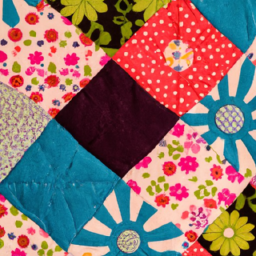
Quilting is an art form that has been passed down through generations. Creating beautiful patterned quilts requires dedication, creativity, and a variety of methods and techniques. One popular technique that quilters use is strip piecing. Strip piecing is a method that involves sewing long strips of fabric together before cutting them into smaller pieces to create a quilt block or design.
Why Strip Piecing?
Strip piecing offers several advantages for quilters. First and foremost, it saves time as it allows for sewing multiple pieces at once. By sewing long strips together, you can create larger sections of a quilt faster and more efficiently. Additionally, strip piecing allows for precise and consistent piecing, resulting in accurately aligned blocks.
How to Strip Piece
Follow these steps to strip-piece your quilt:
- Select your fabric strips: Choose fabrics of varying colors and patterns that complement your overall quilt design.
- Cut your fabric strips: Using a rotary cutter and ruler, cut the fabric strips to the desired width and length.
- Arrange the fabric strips: Lay out the strips in the desired order, considering the color placement and design of the final quilt.
- Sew the fabric strips: Sew the strips together along their long edges, ensuring a straight and consistent seam allowance.
- Press the seams: After sewing, press the seam allowances to one side, alternating the direction with each strip to reduce bulk.
- Repeat the process: Continue adding strips and sewing them together until you achieve the desired width or length for your quilt block.
- Cut the segments: Once the strip-pieced section is complete, use a rotary cutter and ruler to cut the segments needed to create your quilt design.
- Assemble the quilt: Finally, sew the cut segments together to form your quilt block or design.
Endless Possibilities
The strip piecing technique offers endless possibilities for quilt patterns. By varying the width of the strips, combining different colors and prints, and experimenting with block arrangements, quilters can create an array of visually captivating designs. From traditional patterns like ’Log Cabin’ or ‘Nine Patch’ to more modern and intricate designs, strip piecing provides the foundation for innovative and stunning quilts.
In Conclusion
Strip piecing is a valuable technique that allows for efficient quilting while achieving precise and consistent results. By following the steps outlined above and exploring various color and block arrangements, you can unleash your creativity and create unique quilt patterns. So, grab your favorite fabrics, a sharp rotary cutter, and enjoy strip piecing your way to beautiful quilts!
